
Vitamin D3 Hevert 1,000 I.e., 50 pcs
For the prevention of recognizable risk of vitamin D deficiency disease. For the supportive treatment of osteoporosis (degradation of bone tissue) and prevention against rickitis.
Manufacturers: Hevert Arzneimittel GmbH & Co. KG
PZN: 04897754
Dosage: Tabletten
Content: 50 St
Reward Points: 34
Availability: Out of stock
$9.00
from German pharmacies to your address

Instructions for use for Vitamin D3 Hevert 1,000 I.e., 50 pcs
Instructions for use for: Vitamin D3 Hevert 1,000 I.e., 50 pcs
Vitamin D3 Hevert. Active ingredient: colecalciferol. Areas of application: For the prevention of recognizable risk of vitamin D deficiency disease in otherwise healthy without resorption disorder (fault
The inclusion of vitamin D in the intestine), for the supportive treatment of osteoporosis, for prevention against rickitis, for prevention against rickish in premature babies.
For risks and side effects, read the package leaflet and ask your doctor or pharmacist.
LEAFLET: INFORMATION FOR THE USER
Vitamin D3 Hevert, Vitamin D preparation with 1,000 I.e.
Active substance: colecalciferol
Important use information. Read carefully before use!
Application areas:
- For the prevention of recognizable risk of vitamin D deficiency disease in otherwise healthy without resorption disorder (Disruption of the intake of vitamin D in the intestine).
- For supportive treatment of osteoporosis.
- For prevention against Rachitis.
- For prevention against rickets in premature babies.
Contraindications:
When are you allowed to vitamin D3 Hevert Do not take?
- Vitamin D3 must not be used in hypersensitivity (Allergy) to Colecalciferol (Vitamin D3), soy, peanut or any other ingredients.
- In hypercalcaemia (increased calcium concentration in the blood) and / or hypercalciuria (increased calcium concentration in the urine) may not be taken vitamin D3.
- Vitamin D3 should not be taken in pseudohypoarathyroidism (disturbance of the parathyroid household), since the vitamin D demand may be reduced by the phased normal vitamin D sensitivity, with the risk of a long-term overdose. For this purpose, slightly controllable active ingredients with vitamin D activity are available.
Precautions for the application:
The following describes when you vitamin D3 Hevert Only under certain conditions and only with special caution may apply. Ask your doctor about this. This also applies if these information met with you earlier once.
- Vitamin D3 should not be taken when tendency to form calcium-containing kidney stones.
- In patients with an absorbent elimination of calcium and phosphate over the kidney, treatment with benzothiadiazin derivatives (medicines for promoting urinary excretion) and in immobilized patients, vitamin D3 should be used only with special caution, as the risk of hypercalcaemia (increased calcium concentration in the blood ) and hypercalciuria (increased calcium concentration in the urine). In these patients, the calcium levels in the blood and urine should be monitored.
- During long term treatment with vitamin D3, the calcium levels in the blood and urine should be monitored and the kidney function can be checked by measuring serum creatinine. This review is particularly important in older patients and with simultaneous treatment with heart glycosides (medicines for promoting the function of heart muscles) or diuretics (Medicines for promoting urinary excretion). In the case of hypercalcaemia (increased calcium concentration in the blood) or signs of reduced renal function, the dose must be reduced or the treatment must be interrupted. It is recommended to reduce the dose or interrupt the treatment if the calcium content in urine is 7.5 mmol / 24 hours (300 mg / 24 hours) exceeds.
- In patients suffering from sarcoidosis, vitamin D3 should Only be used with caution because the risk of increased transformation of vitamin D is in its active form. In these patients, the calcium levels in the blood and urine should be monitored.
- In patients with impaired renal function which are treated with vitamin D3, the effect on the calcium and phosphate household are monitored.
This medicine containslt sucrose. Patients who suffer from intolerance to certain sugars should only take the medicine after consulting the doctor.
Infants and toddlers:
Vitamin D3 Hevert Should be particularly careful with infants and toddlers, as they may not be able to swallow and suffocate the tablets. It is recommended to resolve the tablets as indicated instead.
Pregnancy and breast feeding period:
During pregnancy should vitamin D3- Hevert only after strict indication and only be dosed as it is absolutely necessary for troubleshooting the defect. Overdoses of vitamin D During pregnancy, as long-lasting hypercalcaemia (increased calcium concentration in the blood) can lead to physical and intellectual disability and innate heart and eye diseases of the child. Vitamin D and its metabolic products go into breast milk. An overdose of infant generated in this way has not been observed.
Driveion and use of machines:
There are no special precautions required.
Interactions with other means
- Phenytoin (medicines for the treatment of epilepsy) or barbiturates (medicines for the treatment of epilepsy and sleep disorders as well as for anesthesia) can affect the effect of vitamin D.
- Thiazid-Diuretics (medicinal products for promoting urinary excretion) can result in hypercalcaemia (increased calcium concentration in the blood) by reducing the calcium excretion over the kidney. The calcium levels in the blood and urine should therefore be monitored during a long-term treatment.
- The simultaneous administration of glucocorticoids (Medicines for the treatment of certain allergic diseases) can affect the effect of vitamin D.
- The risk of an undesirable effect in taking heart glycosides (medicinal products for promoting the function of the heart muscles) may increase as a result of increasing the calcium levels in the blood during treatment with vitamin D (risk for cardiac arrhythmias). Patients should be monitored in the blood and urine in terms of ECG and calcium levels.
Please note that this information can also apply to recently used medicines.
Dosing instructions, type and duration of the application
The following information apply as far as your doctor Vitamin D3- Hevert not prescribed differently. Please stick to the application rules, because Vitamin D3- Hevert Otherwise can not act properly (see also under precautions for the application).
- For the prevention of detectable risk of vitamin D deficiency disease in otherwise healthy without resorption dysfunction daily tablet Vitamin D3- Hevert (corresponding to 0.0125 mg or 500 I.E. Vitamin D).
- For supportive treatment of osteoporosis daily 1 Tablet Vitamin D3- Hevert (corresponding to 0.025 mg or 1000 I.e. Vitamin D).
- For prevention against rachitis daily tablet vitamin D3- Hevert (corresponding to 0.0125 mg or 500 I.e. Vitamin D).
- The dosage must be determined by the attending physician. In general, for prevention against rickitis in premature babies daily 1 tablet vitamin D3 Hevert (corresponding to 0.025 mg or 1000 I.e. Vitamin D) recommended.
During long term treatment with vitamin D3- Hevert If the calcium levels in the blood and urine are regularly monitored and the renal function can be checked by measuring the serum creatinine. Optionally, a dose adjustment according to the blood calcium values must be made.
Type of application:
The tablets should be taken with sufficient fluid. For infants and toddlers, you should disintegrate the tablet on a teaspoon with water and the dissolved tablet will give the child directly, best during a meal, in the mouth. An addition of the decomposed tablets to a bottle or beamplace for infants is not recommended, as this no complete supply can be guaranteed. If the tablets are nevertheless to be administered in the food, the addition takes place only after the boil. When using vitaminized food, the vitamin D quantity contained therein must be taken into account.
Duration of application:
About the necessary duration of the application please contact your doctor. If you have further questions about the application of the medicine, ask your doctor or pharmacist.
Overdose and other application errors
Intake of a large amount of symptoms of overdose:
Ergocalciferol (Vitamin D2) and COLECALCIFEROL (Vitamin D3) Only have a relatively low therapeutic width. In adults with normal function of the secondary thyroid glands, the threshold for vitamin D-inxications is between 40,000 and 100,000 I.e. per day over 1 to 2 months. Infants and toddlers can already react sensitive to far smaller doses. Therefore, before the supply of vitamin D is warned without medical control.
In addition to an overdose of phosphorus in the blood and urine, it comes to the hypercalcamy syndrome (increased calcium concentration in the blood), later also for calcium deposition in the tissues and above all in the kidney (kidney stones and kidney calcification) and the vessels.
The symptoms of inxication are little characteristic and expresses itself in nausea, vomiting, initially often diarrhea, later obstripation (constipation), loss of appetite, matteige, head, Muscle and joint pain, muscle weakness and stubborn drowsiness, azotamia (increased nitrogen concentration in the blood), Increased thirst and elevated urgent and end-phase dehydration. Typical laboratory findings are hypercalcaemia (increased calcium concentration in the blood), hypercalcuria (increased calcium concentration in urine) as well as increased serum values for 25-hydroxycalciferol.
Therapy measures for overdose:
In the case of overdose, measures are required for the treatment of the often long-lasting and perpendicular hypercalcaemia (increased calcium concentration in the blood.
The first measure is to set the vitamin D preparation; A normalization of hypercalcaemia (increased cycle concentration in the blood) due to vitamin D-inxication takes several weeks.
Founded by the extent of hypercalcaemia (increased calcium concentration in the blood), calcium arms or calcium-free nutrition, abundant fluid supply, increase in urinary excretion by means of the fluid furosemide and the administration of glucocorticoids (medicines for the treatment of certain allergic diseases) and calcitonin (hormone for regulation of the control of the Calcium concentration in the blood) are used.
With sufficient renal function, infusions with isotonic saline (3-6 l in 24 hours) act with addition of Furosemid (Medicines for increasing urinary excretion) and may also 15 mg / kg bw / h. Sodium date (medicines that binds calcium in the blood) under continuous calcium and ECG control quite reliably calcium-lowering. If reduced urinary excretion, however, is a hemodialysis treatment (Blood wash) with a calcium-free dialysate displayed.
A special antidote does not exist. Please consult your doctor about the symptoms of overdose vitamin D.
Taking into a small amount or taking has been forgotten:
If you have a lot of vitamin D3 Hevert Coupled or forgot a dose, please do not take twice the amount of medicines next time, but continue taking how intended.
Taking was canceled or interrupted:
In the event of an interruption or premature end of treatment, their complaints can deteriorate or occur again. Please contact your doctor.
Side effects
The side effects of vitamin D arise as a result of hypercalcaemia (increased calcium concentration in the blood) for overdose. Depending on dose and treatment duration, severe and long-lasting hypercalcaemia can be used with its acute (Heart rhythmisms, nausea, vomiting, psychic symptoms, awareness) and chronic (increased urgency, reinforced thirst feeling, loss of loss, weight loss, renal stone formation, renal calcification, calcifications in tissues outside the bone). In individual cases Deadly courses have been described. (See also under overdose and other application errors). Due to the other ingredient soybean oil, the medicine can produce very rarely allergic reactions.
Message of side effects:
If you notice side effects, contact your doctor or pharmacist. This also applies to side effects that are not indicated in this leaflet. You can also share effects directly
Federal Institute for Pharmaceuticals and Medical Products,
Dept. Pharmacovigilance,
Kurt-Georg-Kiesinger Allee 3,
D-53175 Bonn,
Website: www.bfarm.de
Show. By reporting side effects, you can help to provide more information about the security of this medicine.
Notes on durability and storage
The medicament should no longer be used after the expiry of the expiry date specified on the container and outer carton. Do not store more than 25 ° C. Keep away from light and moisture! Store drug out of reach of children!
Composition:
1 tablet contains:
Active substance: COLECALCIFEROL dry concentrate 10 mg accordingly 0.025 mg colecalciferol (= 1000 I.e. Vitamin D3) Other ingredients: carboxymethyl starch sodium (type A), DL-alpha-tocopherol, high-dispenser hydrophobic silica, high-dispersed silica, hydrogenated soybean oil (ph.eur.), Corn starch, microcrystalline cellulose, sodium stearyl fumarate, gelatin (from beef), sucrose.
Dosage form and pack sizes:
20 (pattern) / 50/100/200 (2x100) Tablets to take.
Pharmaceutic entrepreneur:
Hevert -Craft GmbH & Co. KG
In the Weiardwiese 1, D-55569 walnut
www.hevert.de
Made in Germany from:
Hevert Armediant Products GmbH & Co. Kg
Status of information: January 2015
Source: Information of the leaflet
Status: 03/2017
For risks and side effects, read the package leaflet and ask your doctor or pharmacist.
Medicines Reviews
There are no reviews for this product.
Write a review
Popular in Vitamin D tablets
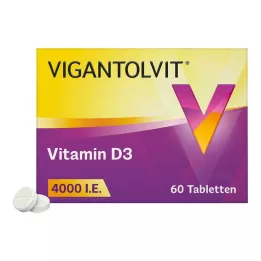
VIGANTOLVIT 4000 IU vitamin D3 tablets, 60 pcs
VIGANTOLVIT 4000 I.E. Vitamin D3 Tabletten
$16.29 $21.72
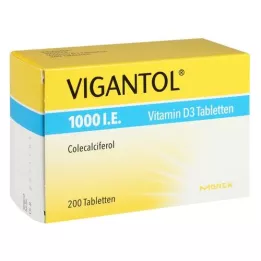
VIGANTOL 1,000 I.E. Vitamin D3 tablets, 200 pcs
VIGANTOL 1.000 I.E. Vitamin D3 Tabletten
$12.90 $19.89
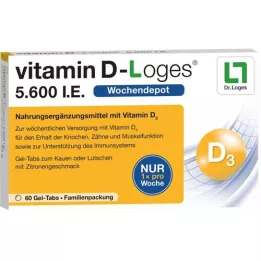
VITAMIN D-LOGES 5,600 I.E. Wo.dePot KauTabl.Fam.pa, 60 pcs
VITAMIN D-LOGES 5.600 I.E. Wo.Depot Kautabl.Fam.Pa
$29.09 $42.09

VITAMIN D-LOGES 5,600 I.E. Wochendepot KauTabl., 15 pcs
VITAMIN D-LOGES 5.600 I.E. Wochendepot Kautabl.
$11.11 $13.88
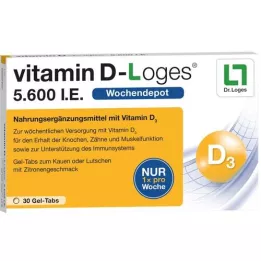
VITAMIN D-LOGES 5,600 I.E. Wochendepot KauTabl., 30 pcs
VITAMIN D-LOGES 5.600 I.E. Wochendepot Kautabl.
$19.22 $24.02
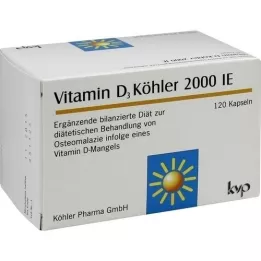
VITAMIN D3 KÖHLER 2,000 I.E. Kapseln, 120 pcs
VITAMIN D3 KÖHLER 2.000 I.E. Kapseln
$17.54 $22.64
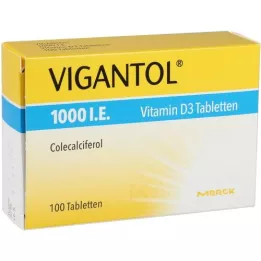
VIGANTOL 1,000 I.E. Vitamin D3 tablets, 100 pcs
VIGANTOL 1.000 I.E. Vitamin D3 Tabletten
$7.79 $10.84
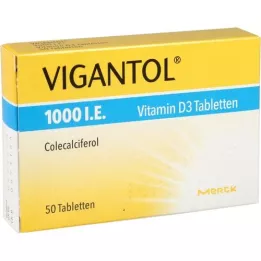
VIGANTOL 1,000 I.E. Vitamin D3 tablets, 50 pcs
VIGANTOL 1.000 I.E. Vitamin D3 Tabletten
$4.80 $6.75
